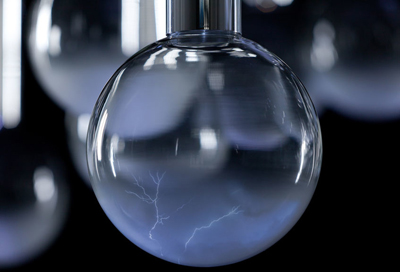|
|
||
|
The best work at this year’s exhibition pushed beyond aesthetics, grappling with the digital, political and environmental challenges of today, says Caia Hagel. Here are some of her favourites The mood at Design Miami 2015, now in its eleventh year, was one of playful tension between the old and the new. The pieces that stood out did so not just for their aesthetic, but also for their philosophical and political messaging. The most striking displays wrestled design away from its current retroversion into modernism, which, while perhaps offering respite from the challenges of early digitalism, fails to present tangible solutions to its realities. Here are some that did it best: Rip Horn Chair by the Haas Brothers and the Haas Sisters “It’s the Trojan Horse,” Niki Haas told me as we sat in his chair, pictured above. “By buying these pieces, wealthy collectors allow subversive politics to enter their homes and subtly inform them and their guests with new ideas.” This collaboration with a community of South African beaders is an example of best practice design – the beaders were credited equally (under the self-adopted name, the Haas Sisters) and remunerated fairly (their fee of half a million dollars successfully reached them despite several detours and blockades). Now we have wonderland furniture and the Haas Sisters have the means to rebuild their local community. KO by Alberto Biagetti and Laura Baldassar at Secondome Gallery
Amid Biagetti’s Body Building collection is a resplendent punching bag: a object that offers a practical solution to stress and taps into the zeitgeist of emphasising the body as a foil to digital avatarism. It is made with delicate gold trimmings, usually used for royal coaches and theatre boxes, using traditional techniques. Atlantis table by Christopher Duffy
A coffee table so interesting and so powerfully depicting water stratas that it’s almost impossible not to fall into seaside reverie or sign up for clean ocean activism while sitting by it. Marble vs Bronze table by Gt2p
Created by a dynamic young collaborative from Santiago, Chile, this table is the result of a process invented by the group of digitally mapping the veins of the marble (“which represents the preservation of love à la Taj Mahal,” says Guillermo Parada from Gt2p), then cutting out sections to replace with bronze (“which represents daily objects, conquering and war”). Unique Blue Crystal by Jeff Zimmerman
A marvel in hand-blown glass, this light sculpture resembles the kind of magical geode you may come across in a guided meditation. It’s an object that steps away from the formalism of the past towards bringing themes of hope, divination, spiritual rejuvenation and magical-realism into the design space. Pirarucu couch by the Campana brothers
The fish that this piece is named after – an ancient, air-breathing giant – has long been a staple food for Amazonian people. The exotic “skin” is unexpectedly soft and acts as a symbol of post-apocalyptic survivalism. The Joris Laarman Microstructures chaise
Using frontier technology under which 3D printing is designed and engineered on a cellular level, this couch is not only a study in futurist methods but it’s soft and cozy to sit in, suggesting that we are finally acquiring sensuality in the use of computer-generated-biotechnology. Lumière by Commonplace Studio
A series of light installations project sublime moving images onto the inner surface of glass bulbs. Evoking moods, memories, seascapes and clouds, this cinematic light – so much like the crystal ball of fortune-telling – also conjures the speed and flux of contemporary life, migrant people and fragile ecologies. El Sol by Fernando Romero Enterprise
This vast geodesic structure, one billion times smaller than the sun and composed of 2,880 custom-made precision-cut Swarovski crystals, may appear to be a disco ball, but its intensity shines a cosmic light onto its surroundings while also referencing global warming. The School of Physics and Astronomy at the University of Birmingham in the UK collaborated on a soundscape for this piece that is in fact the “sound” of the sun made up of acoustic waves, formed from decades of data captured by spectrometers observing the sun since the 1970s. Bedroom by Katie Stout
Stout’s vision of private space comes in the form of a girl’s bedroom, replete with excessive fantastical elements that push the boundaries of what we recognise as functional objects. The recent RISD graduate’s work is immersive and her studio was filled with girls in pyjamas during the making of this installation. “I was going to make a stuffed animal of a girl in her undies on her stuffed laptop taking photos in photobooth, but due to my deadline I couldn’t,” she says. Design Miami took place from 2 to 5 December 2015. What were your highlights? Tell us on Twitter using the handle @iconeye |
Words
Images: Friedman Benda; Adam Reich |
|
|
||
|
|
||





























